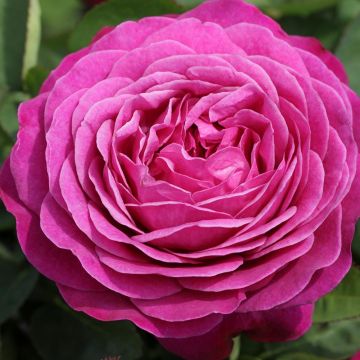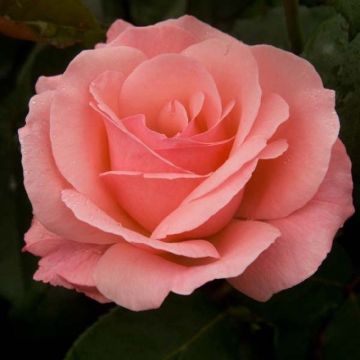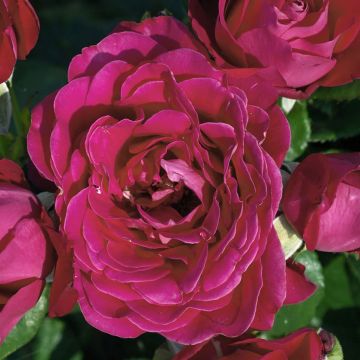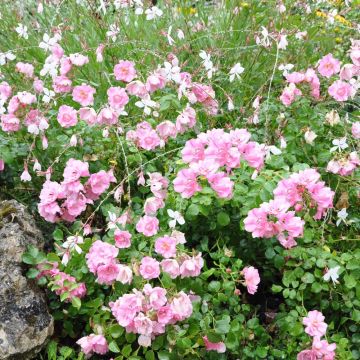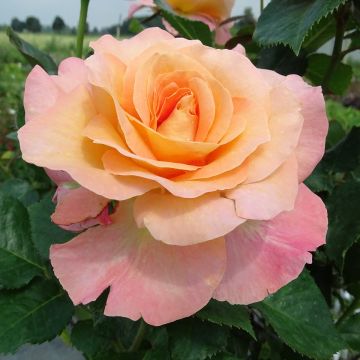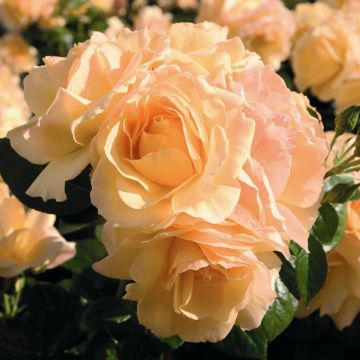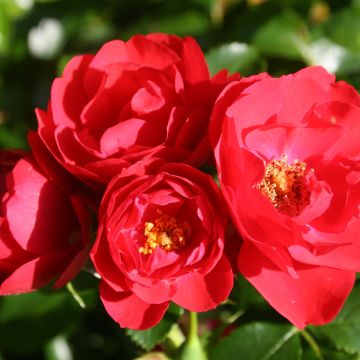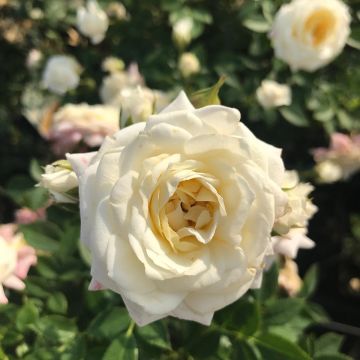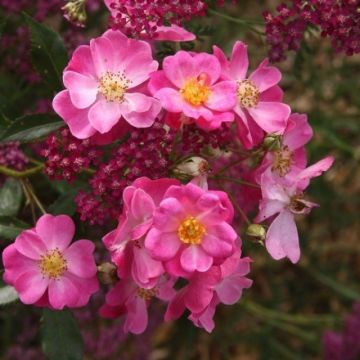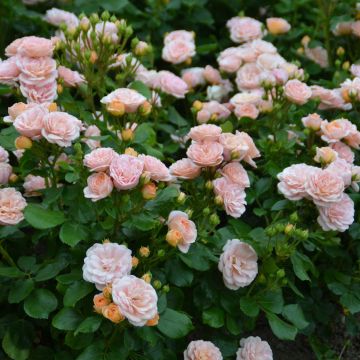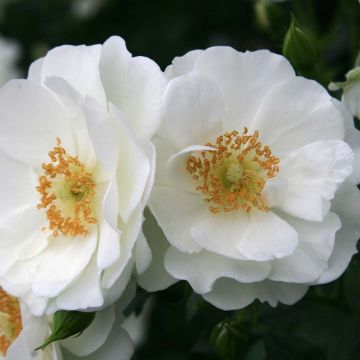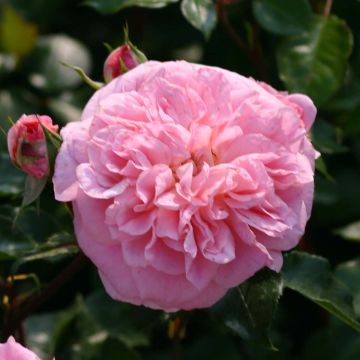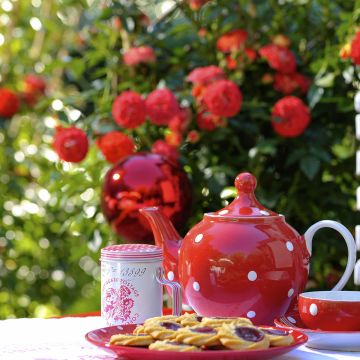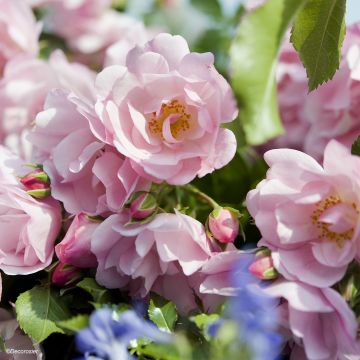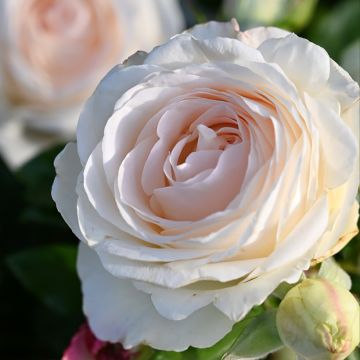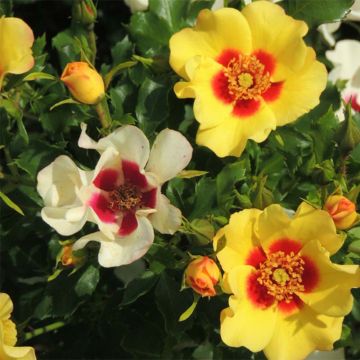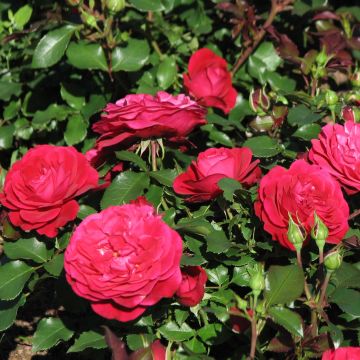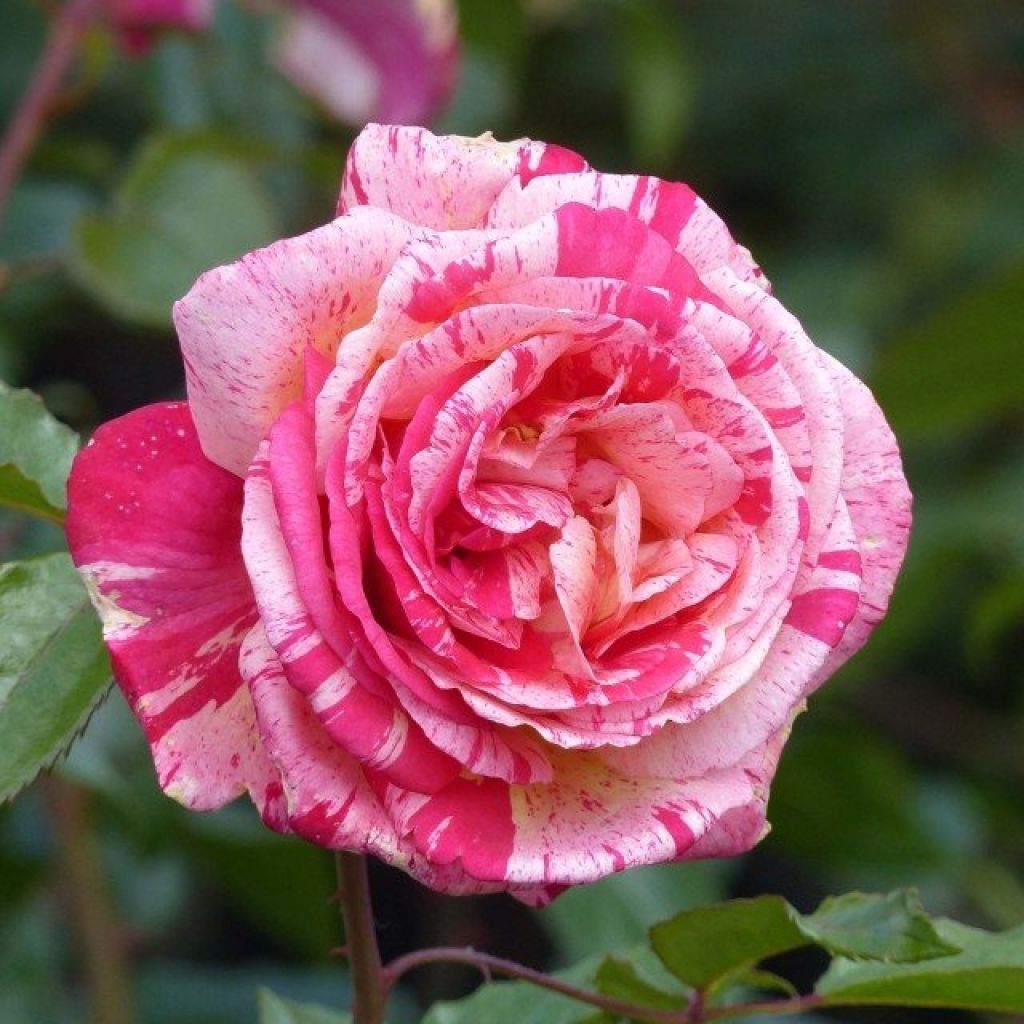

Rosier Brocéliande sur tige
Rosa Broceliande - Standard Rose
Rosa Broceliande® ADAterhuit
Rose
This item cannot be shipped to the selected country
Oversize package delivery charge from €6.90
Oversize package delivery charge from €6.90
Delivery to Corse prohibited
More information
Schedule delivery date,
and select date in basket
This plant carries a 24 months recovery warranty
More information
We guarantee the quality of our plants for a full growing cycle, and will replace at our expense any plant that fails to recover under normal climatic and planting conditions.
Oversize package: home delivery by special carrier from €6.90 per order..
Express home delivery from €8.90.
Oversize package: home delivery by special carrier from €6.90 per order..
Express home delivery from €8.90.
Delivery to Corse prohibited: UE law prohibits the import of this plant from mainland France to Corse as part of the fight against Xylella fastidiosa. Please accept our sincere apologies.
More information
Does this plant fit my garden?
Set up your Plantfit profile →
Description
The Broceliande Standard Rose forms a unique small tree, covered in variegated flowers from summer to autumn, which doesn't go unnoticed in the garden. It stands out not only for its distinctive habit but also for the colour of its flowers, variegated and striated in different shades of pink, red, ivory, and pale yellow, and finally for its powerful fruity fragrance. This award-winning variety is highly floriferous, easy to cultivate, and highly resistant to diseases. Its perfectly formed flowers are stunning in homemade bouquets!
Standard roses are obtained by grafting a variety (in this case, the Broceliande bush rose) onto a single, upright stem belonging to a different rose (Rosa canina, R. laxa, or R. multiflora), with the graft being made at a certain height, here at 90 - 100 cm (35 - 39in) from the ground. In very cold regions, it may be useful to protect the rootstock in winter.
'Broceliande (Adaterhuit) is a modern rose with large, highly fragrant flowers obtained by Adam in 1997. It was awarded in 2004 in the 'roses with noble flowers' category at the International New Roses Competition in Lyon, and received prizes in Paris, Orléans, Monza, and Geneva. Grafted onto a standard rose, it has a characteristic habit consisting of a slender, upright trunk topped with a bushy crown. Its branches are sturdy and bear a very elegant, very healthy foliage, of a glossy dark green colour, with low susceptibility to diseases. Throughout the summer, if faded flowers are removed, the plant continuously produces large, uniquely shaped roses, measuring 8 cm (3in) in diameter, opening into slightly globular cups. They are solitary, sometimes grouped in two or three, carried at the ends of long shoots from the current year or emerging from 2-year-old stems. The repeat flowering is also characterised by a fruity and powerful fragrance. The deciduous foliage falls in autumn.
This Broceliande Standard Rose, with its elegant habit, unique colour, and delicious fragrance, is ideal at the centre of a bed of delicate perennials, along a pathway, near a patio, as a specimen in a well-tended small garden, or in a large pot on a balcony. Its rich colour can be challenging to match, but it can be combined, for example, with white or pink phlox, red penstemons, chamomiles, fuchsia pink shrubby salvias, as well as with the dark foliage of boxwoods, Distylium (x) Blue Cascade, and cotoneaster. Its cut flowers, with good longevity, are naturally perfect for bouquets.
Report an error about the product description
Plant habit
Flowering
Foliage
Botanical data
Rosa
Broceliande® ADAterhuit
Rosaceae
Rose
Cultivar or hybrid
Other Tree Roses - Stem Roses
Planting and care
Plant the standard Rose Broceliande in a sunny or lightly shaded position. Modern roses are tolerant but do not appreciate an excess of limestone. They will adapt to any garden as long as the soil is well worked, not too heavy, and rich enough. To plant your rose, work the soil by crumbling it well and put an amendment, such as bonemeal, at the bottom of the planting hole. Water thoroughly after planting to eliminate air pockets. Water regularly for a few weeks to facilitate rooting.
In regions with very cold winters, it is advisable to protect the graft of standard roses (the 'trunk') by surrounding it with a thick winter mulch.
Pruning modern repeat flowering roses is essential for flowering. It can be carried out in three steps:
1. Maintenance pruning: regularly shorten the flowering branches throughout the season. To encourage the reblooming of repeat flowering roses, remove faded flowers along with their stem and two or three leaves.
2. Preparatory pruning in autumn: light pruning that anticipates the true spring pruning. It is not recommended in regions with cold winters to avoid weakening the bush.
3. Spring pruning: in February-March, when the buds have become shoots 2 to 3 cm (1in) long, prune the young strong branches to one-quarter of their length.
Pruning always aims to clear the heart of the bush and remove dead wood, diseased branches, and weak shoots. The most vigorous branches will be kept, usually three to six well-positioned branches to maintain a beautiful habit. Always prune at a slant about ½ cm or 1 cm (0.5in) above a bud facing outward.
Planting period
Intended location
Care
This item has not been reviewed yet - be the first to leave a review about it.
Roses by purpose
Haven't found what you were looking for?
Hardiness is the lowest winter temperature a plant can endure without suffering serious damage or even dying. However, hardiness is affected by location (a sheltered area, such as a patio), protection (winter cover) and soil type (hardiness is improved by well-drained soil).

Photo Sharing Terms & Conditions
In order to encourage gardeners to interact and share their experiences, Promesse de fleurs offers various media enabling content to be uploaded onto its Site - in particular via the ‘Photo sharing’ module.
The User agrees to refrain from:
- Posting any content that is illegal, prejudicial, insulting, racist, inciteful to hatred, revisionist, contrary to public decency, that infringes on privacy or on the privacy rights of third parties, in particular the publicity rights of persons and goods, intellectual property rights, or the right to privacy.
- Submitting content on behalf of a third party;
- Impersonate the identity of a third party and/or publish any personal information about a third party;
In general, the User undertakes to refrain from any unethical behaviour.
All Content (in particular text, comments, files, images, photos, videos, creative works, etc.), which may be subject to property or intellectual property rights, image or other private rights, shall remain the property of the User, subject to the limited rights granted by the terms of the licence granted by Promesse de fleurs as stated below. Users are at liberty to publish or not to publish such Content on the Site, notably via the ‘Photo Sharing’ facility, and accept that this Content shall be made public and freely accessible, notably on the Internet.
Users further acknowledge, undertake to have ,and guarantee that they hold all necessary rights and permissions to publish such material on the Site, in particular with regard to the legislation in force pertaining to any privacy, property, intellectual property, image, or contractual rights, or rights of any other nature. By publishing such Content on the Site, Users acknowledge accepting full liability as publishers of the Content within the meaning of the law, and grant Promesse de fleurs, free of charge, an inclusive, worldwide licence for the said Content for the entire duration of its publication, including all reproduction, representation, up/downloading, displaying, performing, transmission, and storage rights.
Users also grant permission for their name to be linked to the Content and accept that this link may not always be made available.
By engaging in posting material, Users consent to their Content becoming automatically accessible on the Internet, in particular on other sites and/or blogs and/or web pages of the Promesse de fleurs site, including in particular social pages and the Promesse de fleurs catalogue.
Users may secure the removal of entrusted content free of charge by issuing a simple request via our contact form.
The flowering period indicated on our website applies to countries and regions located in USDA zone 8 (France, the United Kingdom, Ireland, the Netherlands, etc.)
It will vary according to where you live:
- In zones 9 to 10 (Italy, Spain, Greece, etc.), flowering will occur about 2 to 4 weeks earlier.
- In zones 6 to 7 (Germany, Poland, Slovenia, and lower mountainous regions), flowering will be delayed by 2 to 3 weeks.
- In zone 5 (Central Europe, Scandinavia), blooming will be delayed by 3 to 5 weeks.
In temperate climates, pruning of spring-flowering shrubs (forsythia, spireas, etc.) should be done just after flowering.
Pruning of summer-flowering shrubs (Indian Lilac, Perovskia, etc.) can be done in winter or spring.
In cold regions as well as with frost-sensitive plants, avoid pruning too early when severe frosts may still occur.
The planting period indicated on our website applies to countries and regions located in USDA zone 8 (France, United Kingdom, Ireland, Netherlands).
It will vary according to where you live:
- In Mediterranean zones (Marseille, Madrid, Milan, etc.), autumn and winter are the best planting periods.
- In continental zones (Strasbourg, Munich, Vienna, etc.), delay planting by 2 to 3 weeks in spring and bring it forward by 2 to 4 weeks in autumn.
- In mountainous regions (the Alps, Pyrenees, Carpathians, etc.), it is best to plant in late spring (May-June) or late summer (August-September).
The harvesting period indicated on our website applies to countries and regions in USDA zone 8 (France, England, Ireland, the Netherlands).
In colder areas (Scandinavia, Poland, Austria...) fruit and vegetable harvests are likely to be delayed by 3-4 weeks.
In warmer areas (Italy, Spain, Greece, etc.), harvesting will probably take place earlier, depending on weather conditions.
The sowing periods indicated on our website apply to countries and regions within USDA Zone 8 (France, UK, Ireland, Netherlands).
In colder areas (Scandinavia, Poland, Austria...), delay any outdoor sowing by 3-4 weeks, or sow under glass.
In warmer climes (Italy, Spain, Greece, etc.), bring outdoor sowing forward by a few weeks.

































